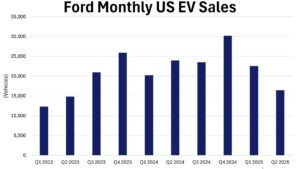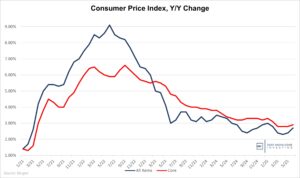DKI has been speaking and writing about the financial issues facing Japan for more than a year. When interest rates were ultra-low, Japan took on massive debt totaling approximately 260% of GDP. That crushing debt load should have caused a financial collapse, but didn’t due to the lowest interest rates in recorded history including trillions in sovereign debt trading at negative yields.
As central banks all over the world started to raise interest rates to fight inflation, the Bank of Japan (BoJ) held the line on the Japanese 10-Year bond at rates that were negative for a long time, then capped at 50bp (.5%), and more recently capped at 100bp (1%). All of this illustrated that the BoJ trapped itself in an impossible position.
Because the BoJ was keeping the yield on the 10-year artificially low and about 500bp below other central banks, that made saving in yen unattractive. People sold the yen and bought dollars capturing that huge spread in yield. This drove the yen down about 30% last year to 150 yen to the dollar. That’s a problem for a small island nation that has to import a lot; especially energy which is priced in dollars. For those of use who have been unhappy with the high inflation we’ve seen here in the US in recent years, try to imagine how much worse it would have been had the dollar slid 30% against the currencies of our trading partners.
So, the BoJ could just let rates rise and that would fix the problem – right? That doesn’t work either. Higher rates mean higher interest expense which is especially problematic when your debt is 260% of GDP. Japan could have paid the higher interest on higher rates only by printing more yen to cover the cost. As we’ve discussed many times, more currency units chasing the same production leads to inflation which is another way of saying a weaker currency. In other words, no matter what the BoJ did, the country would be facing a weaker yen and higher future inflation.
For those of you who want to understand the issue in greater detail, we’ve linked many pieces of DKI research and speaking engagements on the topic in a blog post titled “Japanese Debt – We’re Taking a Victory Lap”.
In the last day, the BoJ has started to acknowledge the inevitable and has lifted the 1% cap on its 10-year security. This should have reduced the attractiveness of the carry trade and strengthened the yen. (In general, and in isolation, a higher interest rate increases demand for a currency and causes it to trade higher against other currencies.) Instead, we saw something different. The yen has continued to decline and remains locked above 150 yen to the dollar.

Chart from MarketWatch
The above chart shows the yield on the Japanese 10-year government bond. You can see where the BoJ began allowing it to trade above 25bp and then again when it allowed trading above 50bp. Since last July, the yield has risen consistently and the BoJ has indicated they’ll let it go above 1%. All of this should have strengthened the yen. Let’s look at what actually happened:

Chart from XE.com. Shows it now takes 151.6 yen to buy 1 dollar.
We can see the yen has slid consistently since July. Worth noting, the US Federal Reserve hasn’t hiked rates since July so this could be considered a counter-intuitive reaction. What’s going on here?
As we discussed in Counter-Intuitive Inflation, when debt reaches Ponzi scheme levels, increases in interest rates can cause more inflation. That’s because higher rates lead to higher interest expense. When government budgets are over-stretched, the only way to pay for that additional interest expense is to print more currency which then causes additional inflation. We’re defining “Ponzi scheme levels” as so much debt that you have to print currency to pay for the interest on the currency you previously printed.
For those of you who read Counter-Intuitive Inflation and the October DKI subscriber letter on the bond vigilantes, you know where I’m going with this. The reason we’re watching Japan so closely is because we’re heading in the same direction they are. Yesterday, we got notice the US Treasury plans to issue another $1.6 trillion in debt over the next two quarters. This is after borrowing $1T last quarter. Add in some additional borrowing once the debt ceiling deal was done, and planned incremental borrowing for the 10 months from June 1st to March 31st is almost $3 trillion.
Congress thinks they’ve discovered some magic finance idea that enables them to engage in unlimited spending at no cost. We’ll all live materially rich lives paid for with dollars printed by the Treasury. Taken out a little farther, it’s not clear to me why any of us are working or paying taxes. Of course, this is ridiculous. We will all pay for this next $3T of spending, but instead of through our taxes, we’ll pay for it in higher inflation.
Like Japan, our government has incurred enough debt that we’re also in Ponzi territory; printing currency to cover the interest on yesterday’s printed currency. The Federal Reserve is trapped like the BoJ. Lower rates will cause inflation. Higher rates will cause greater interest expense, more money printing, and more inflation. The Fed is no longer in control. The bond vigilantes are, and they’re watching the US Treasury.
The best proof of all of this is when Japan raised the allowed rate on their 10-year, the yen continued to fall. When the US Federal Reserve stopped raising the fed funds rate, the long end of the yield curve continued to rise. Again, the bond market is now in control. Instead of learning from Japan’s error, we are copying them. The nightmare scenario would be if Japanese interest rates reach a level where the carry trade described above gets unwound. It would cause massive selling of US Treasuries and buying of Japanese ones. It would both weaken the dollar and increase our borrowing costs. We’d have higher inflation, higher interest rates, and higher interest cost. It won’t end well.
Information contained in this report is believed by Deep Knowledge Investing (“DKI”) to be accurate and/or derived from sources which it believes to be reliable; however, such information is presented without warranty of any kind, whether express or implied and DKI makes no representation as to the completeness, timeliness or accuracy of the information contained therein or with regard to the results to be obtained from its use. The provision of the information contained in the Services shall not be deemed to obligate DKI to provide updated or similar information in the future except to the extent it may be required to do so.
The information we provide is publicly available; our reports are neither an offer nor a solicitation to buy or sell securities. All expressions of opinion are precisely that and are subject to change. DKI, affiliates of DKI or its principal or others associated with DKI may have, take or sell positions in securities of companies about which we write.
Our opinions are not advice that investment in a company’s securities is suitable for any particular investor. Each investor should consult with and rely on his or its own investigation, due diligence and the recommendations of investment professionals whom the investor has engaged for that purpose.
In no event shall DKI be liable for any costs, liabilities, losses, expenses (including, but not limited to, attorneys’ fees), damages of any kind, including direct, indirect, punitive, incidental, special or consequential damages, or for any trading losses arising from or attributable to the use of this report.





Is it mean that it’s to buy yen?
Hard to say. I think the BoJ has to raise rates to save the currency, but in the US, the bond vigilantes are causing Treasury rates to rise. The US has been moving faster, but Japan is starting to increase rates as well.